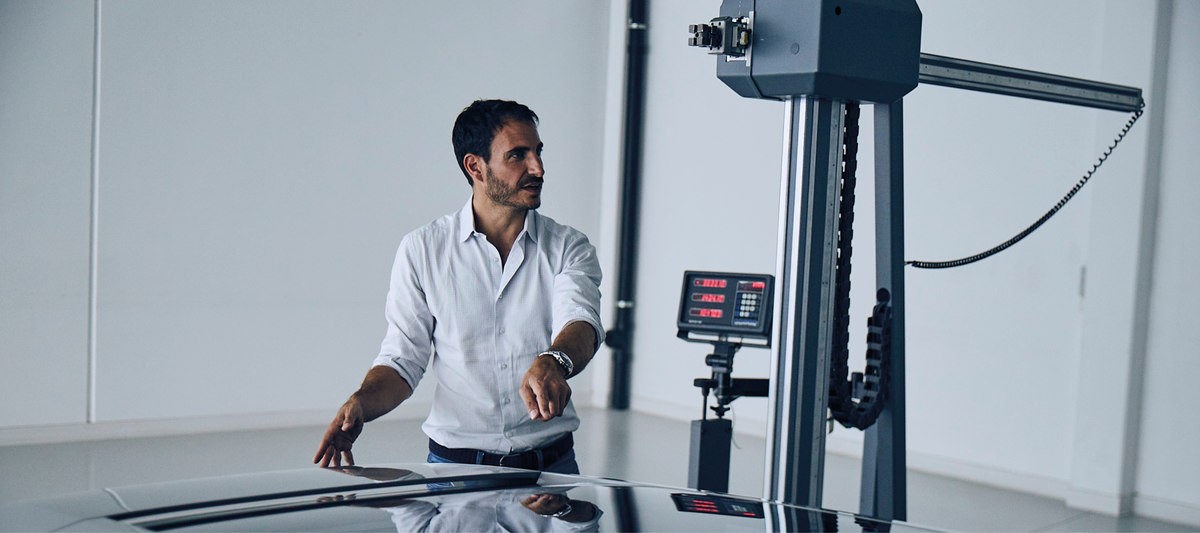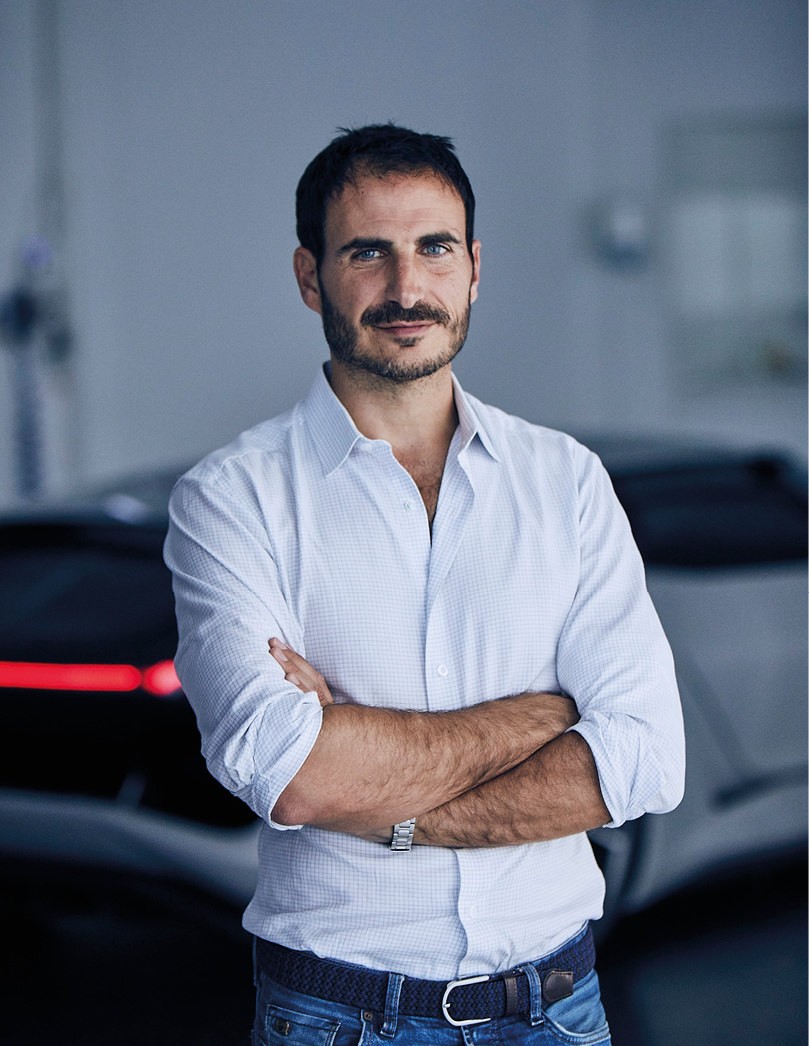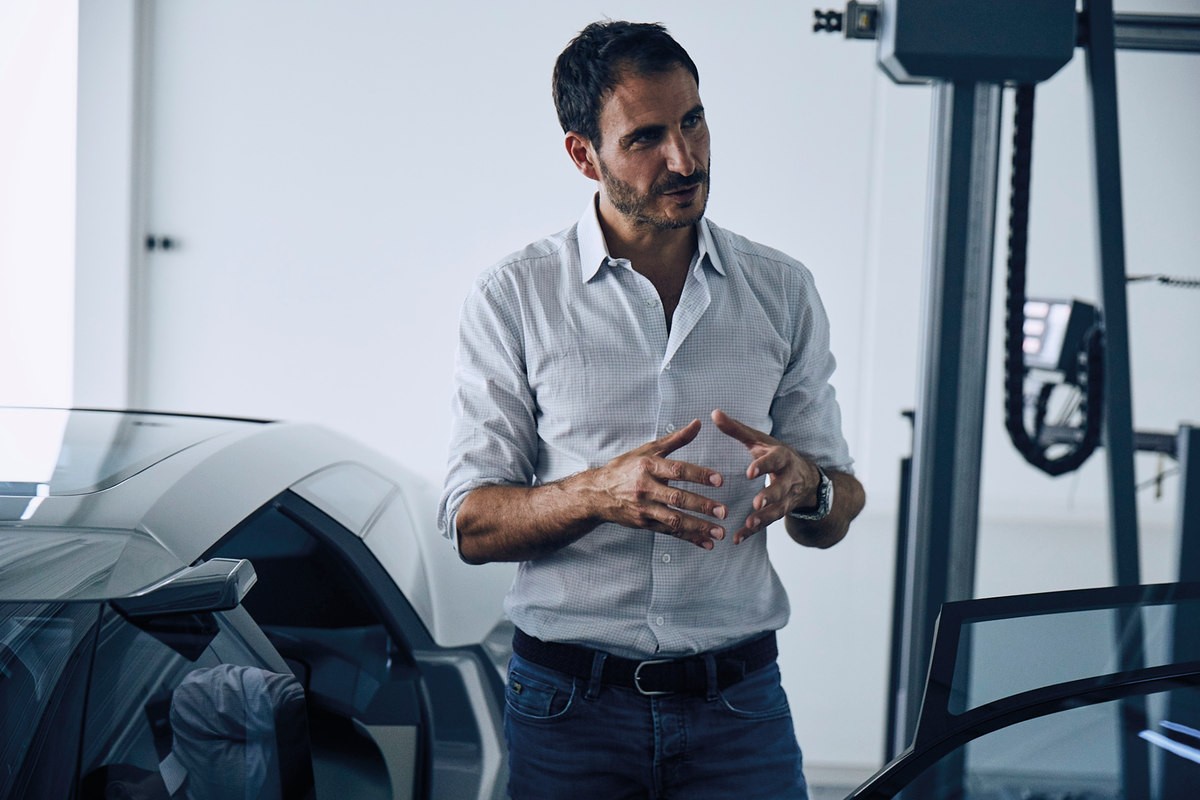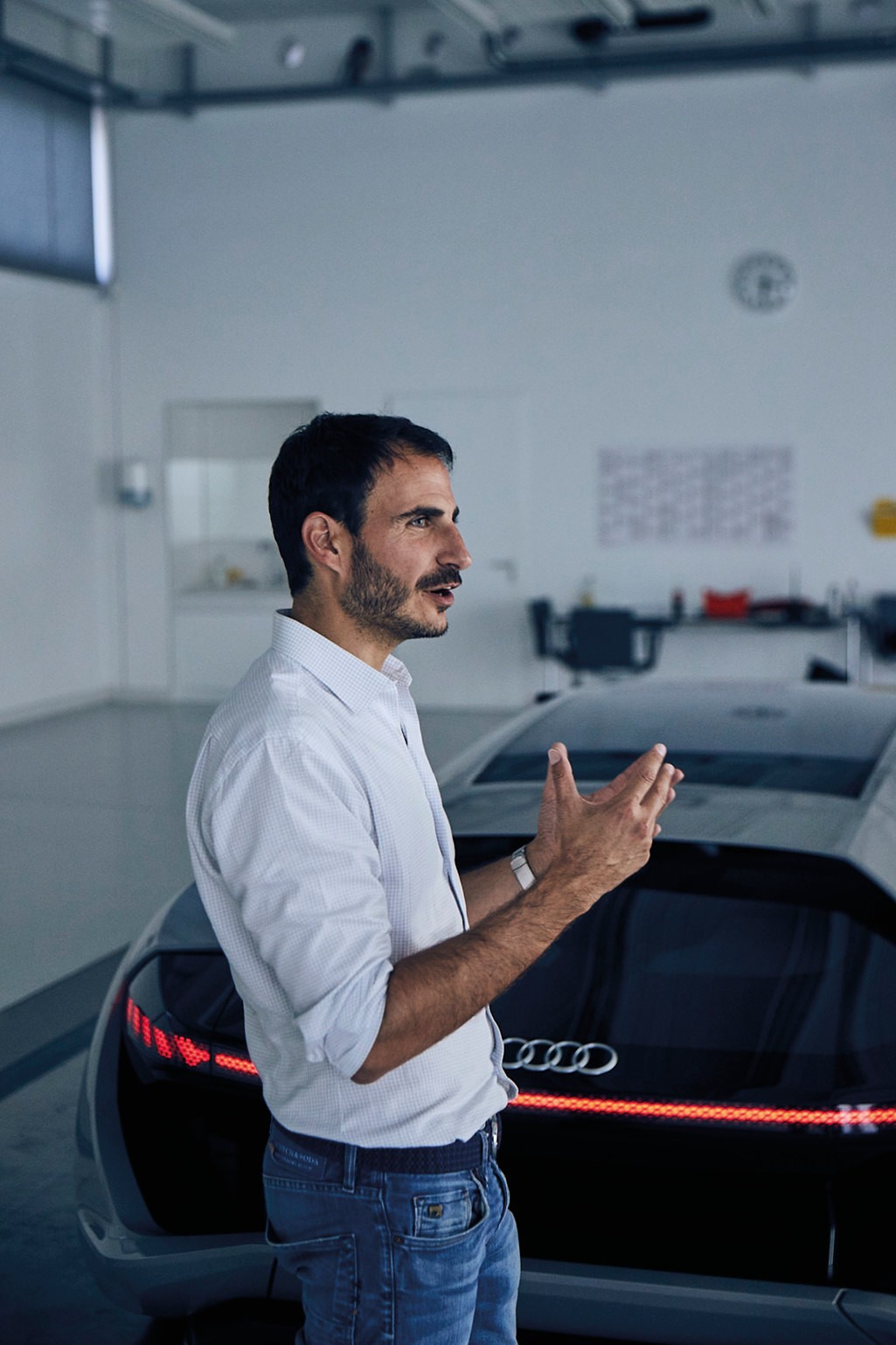
Visionary hypercar
Audi unveiled its stunning electric-powered Audi PB18 e-tron concept car at the Pebble Beach Automotive Week in Monterey, California. Its name refers both to the venue where it made its debut and to the technological DNA it shares with Audi’s three-times Le Mans-winning R18 e-tron. Here, Gael Buzyn, Senior Design Director of the Audi Design Loft in Malibu, where the car was created, explains why the Audi PB18 e-tron puts the driver in the centre of the car and at the epicentre of the action.
Angus Frazer (copy) & Robert Grischek (photo)The Audi Magazine: What is the most exciting thing about designing a car?
Gael Buzyn: To deliver a new experience for the consumer and to create a product that will be appreciated and possibly a game-changer. In the case of a concept car, to have the chance to steer where the industry is going and present a vision of what the future of mobility should be.
What was the philosophy behind the Audi PB18 e-tron concept?
To create a vision of what a supercar for the enthusiast driver should be in the electric era. One of the core values of Audi is to always use new technology to leap forwards – our motto is, of course, Vorsprung durch Technik. We knew that by using the new technology that is available thanks to the electric revolution we are going through in the industry, we could create a vehicle that offered a more exciting and authentic driving experience.
Why did you choose to reveal the car at Pebble Beach?
Because it is the best place to reach out to car enthusiasts. The people who go there really have a passion for cars: past, present and future. We assumed that many had the same questions about the future of driving. We wanted to present our vision to them first as we appreciate there is some apprehension from the more conservative car enthusiasts about the advent of electrification. Our goal is to convince them that the future can be an even better place for driving. To be honest I was one of them, and I was the first one to have to be convinced.
Why did you not just put an electric motor in an existing Audi model?
We wanted to take a more progressive approach. We believed that it would be a missed chance not to fully leverage the opportunities offered by such a radical change of technology, in particular the flexibility and compact nature of the electric powertrain componentry. This is a real chance for designers to express their creativity.
Was the process different to designing an internal combustion engine car?
Designing an electric car actually enables designers to be more creative and gives us more freedom. It allows us to push the limits further than we have been able to before. This is true about the overall design and proportions and also the experience you can give the user. This is what I was most excited about while developing this car.
So, the aim was to create a pure driver’s car?
Absolutely, we wanted to create a car that got as close as possible to giving the driver the same experience as a racing driver. Because we believe that’s the experience that the supercar owner is trying to get close to.
How did you achieve that?
For a start we removed all the driver aids so that it is the driver who gives all the inputs. There is nothing that interferes between you and the steering and the accelerator and brake pedals. We gave the car the working title ‘Level Zero’ to differentiate it from the Level 3, 4 and 5 autonomous driving modes currently in focus at Audi. Then we optimized the architecture by putting the battery pack behind the occupants instead of using one imbedded in the floor, which is often referred to as the “skateboard”. We did it because we didn’t want to add height to the car; we needed the aerodynamics to be optimised, which is very important on an electric car for driving range and performance. It also gives a low centre of gravity and great driving dynamics. Also, if you want to create a true race car feeling the car has got to be as close to the ground as possible. Our aim was to make the driver feel like they are sitting in a monoposto, a single-seater. So, we created a cockpit that can be moved to a central position simply by pressing a button on the steering wheel. We leveraged the drive-by-wire technology and created a driving cockpit independent from the rest of the cabin that can slide over the passenger seat toward the centre of the car. Being in the middle, the driver can experience the purest, most authentic and most efficient racing driving position, similar to a monoposto. Think of a mixed experience between the R18 and the Audi Formula E. In this mode, while the driver moves to the centre, the rear spoiler deploys and the car squats down 15 mm, in order to increase downforce.

Gael Buzyn was born in Paris and knew from an early age that he wanted to design cars. His father always drove Audis and his mother still has one of the very first drawings of a car that Gael did when he was two years old. He studied fine art and architecture and obtained a diploma in interior architecture before going on to achieve a master’s in transportation design in Paris. Gael joined Volkswagen in 1998, where he designed several production car interiors. After moving to the US to work for General Motors for many years, he returned to Audi in 2016 to open and lead the Audi Design Loft in Los Angeles. A true car fan, Gael loves both road and track driving and owns a range of cars, from a Citroën DS to a Porsche 911 GT3.

Technology: Measuring 4.53 meters long and 2 meters wide, the Audi PB18 e-tron is constructed from aluminum, carbon and multi-material composites, giving a total weight of less than 1,550 kg. The battery, mounted behind the rear seats, powers three electric motors, one at the front and two at the rear, to deliver quattro drive. Maximum output is 830 Nm and 500 kW, which can be boosted to 570 kW, delivering 0 to 100 km in scarcely more than 2 seconds. This performance is combined with a 470-litre luggage space, a 15-minute battery recharge time and a range of more than 500 km.


What else did you do to enhance the driving experience?
To enhance the connection between the road and the driver (which ultimately defines driving pleasure), we have leveraged the compact nature of the electric powertrain (with only one of the three motors sitting in the front) and extended the windscreen as low as possible. This way, and thanks to the use of new transparent OLED displays in the gauges, which prevents any obstruction, the driver can see the road through the empty “Singleframe” and through the steering wheel. The tarmac lies literally at your feet, and gives you a unique sensation of speed.
But, following Audi’s tradition, you’ve managed to implement practicality as well?
Absolutely! There once again we just leveraged the technology offered by the electric powertrain. We have a lot of room above the two motors at the back of the car, which are mounted between the wheels, so we decided to create a big cargo compartment that is accessible through a large rear hatch. We also designed a tailored luggage set that can be used for your racing equipment if you go to the track. Or, you and your passenger can pack for a longer road trip if you decide to use the car more like a GT than a pure racing machine.
What are the features that identify the Audi PB18 e-tron as an Audi?
First the proportions, which come from the car’s functionality. This architecture gives the car its unique silhouette – like a crossover between a supercar and a shooting brake. The Audi PB18 e-tron is undoubtedly an Audi. You can also see the typical Singleframe that we’ve talked about, and that is now opened in order to let air flow above and under the cabin for better cooling and aerodynamics, and the widely extended wheel arches, the classic quattro fenders.
Did you have any help from Audi Sport?
Allan McNish [three-time Le Mans 24 Hours winner and Audi Formula E Team Principal] was involved very early on and was a big supporter of the sliding driver’s cockpit. He believed that it provided the purest and most efficient racing driving position and confirmed that we were working in the right direction.
How important is it that everything presented on this car could be achievable from an engineering point of view?
It is very important for us because it is about technology. “Vorsprung durch Technik” governs the way we approach everything at Audi and most particularly with this car. We did not create a futuristic car hoping that there would be technology to support that concept one day. Rather, we started with technology that already exists, at least in some form. Every feature in the Audi PB18 e-tron is feasible and realistic and has been vetted by our engineering team.
President Abraham Lincoln said, ‘The best way to predict the future is to create it.’ Would you agree with that?
I love that quote because it fits with my vision of the brand. The company has always redefined the future of mobility and will continue to do so despite the industry undergoing a total revolution. The Audi PB18 e-tron is not defined by its technology alone. It sends a message about our DNA, asserting what Audi as a brand is about: delivering exciting products that the customer emotionally connects with.